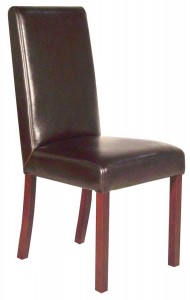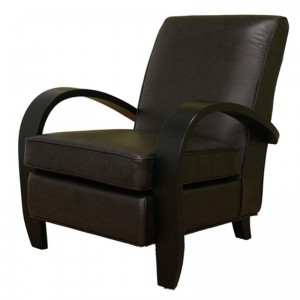
Leather. It’s a fairly direct term that could hardly lead to confusion. Right?
Well, not exactly. If you’ve ever shopped for leather furniture, then you know that’s the case.
The furniture industry has almost as many terms and variations on the term leather as there are shades of blue.
This article will hopefully serve as a quick reference guide that helps clarify some terms you’ve either already come across or are bound to come across when shopping for furniture.
The following terms will be broken down into two categories: full grain vs. augmented and appearance-altering methods.
Full Grain vs. Augmented
The material, leather, comes from the hide, or skin of an animal. If the furniture you’re purchasing is upholstered in full-grain leather, the hide has not been amended in any way aside from hair removal.
In many cases, full-grain leather has to be altered, often due to expense. This has led to some industrial renovations such as bonded (or bi-cast) leather and leather match. For more on bi-cast leather, see Bi-Cast Leather: Defined.
Bonded leather is a material in which a varying amount of leather has been combined with a polyurethane layer of fused with other textiles. Depending upon the manufacturer, the finished product may contain anywhere from 20% to 90% leather.

Leather match is when furniture has been upholstered in leather and vinyl that has been dyed to match the leather. This vinyl is applied to the back and sides while the leather is usually used for cushions and everywhere else the body may come in contact with.
Appearance-Altering Methods
Drum-dyed leathers are submerged in vats filled with translucent dye and tumbled to ensure the hides are completely penetrated. Because the dye is translucent, the grain becomes visible and adds a rich, high-quality appearance. Because the grain can be seen, however, so can the imperfections. This means that only the highest-quality hides are used for it.
The finished product is referred to as aniline leather. Other common terms for it include natural, unprotected or naked leather as well as true, naked or pure aniline.
Pigmented leathers are those in which the color is applied to the outer surface and not dyed. This helps to hide imperfections in lesser-quality hides.
A somewhat combination of the two would be protected aniline. This leather has been drum-dyed, but is still slightly pigmented so the surface can be more resistant to liquid and the color, more consistent.
Hopefully, this guide has helped to clarify some common, yet confusing industry terms related to leather.
